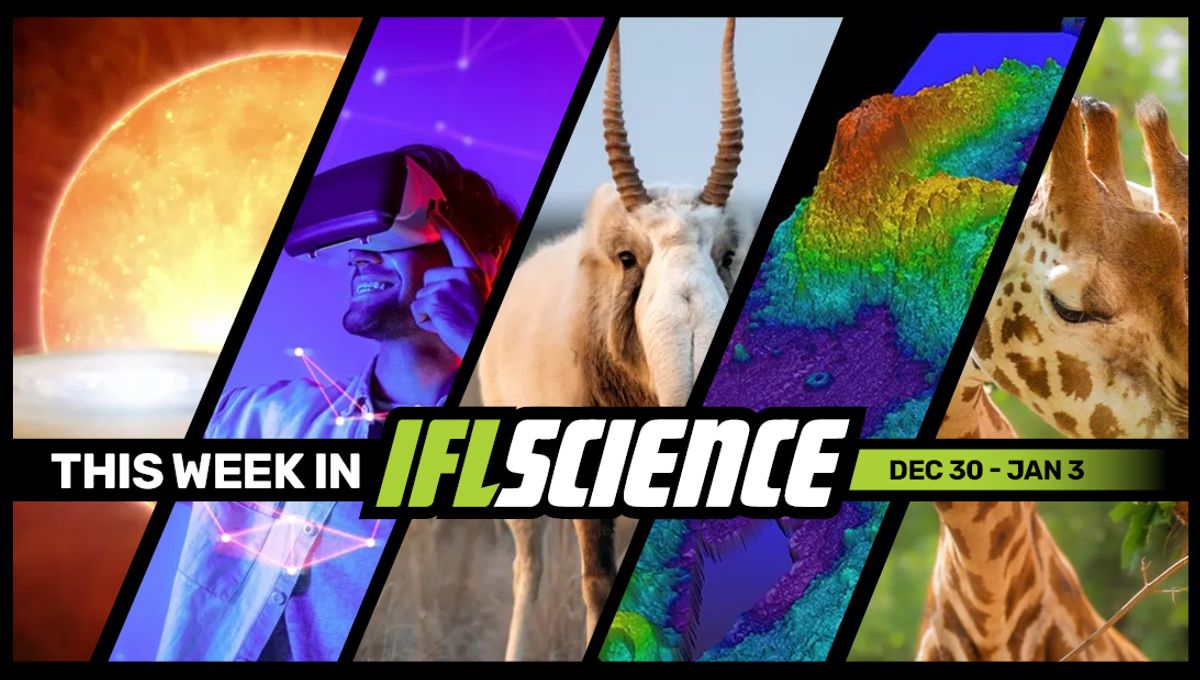
This week, we revisit some 100-year-old, but spookily accurate, predictions for 2025, the Earthshot Prize has been awarded to an ecosystem restoration project that marks one of the most significant mammal recoveries ever recorded, and the first-ever fertilized and preserved giraffe embryo sparks hope for endangered species. Finally, January 1, 2025, marked 100 years since Edwin Hubble first proved galaxies existed outside the Milky Way, showing that the universe is huge, and changing forever how we see ourselves within it.
Subscribe to the IFLScience newsletter for all the biggest science news delivered straight to your inbox every Wednesday and Saturday.
Once-In-A-Lifetime T Coronae Borealis Nova Event Expected Soon
Around every 80 years, the system we call T Coronae Borealis experiences a sudden increase in brightness. It becomes up to 1,585 times brighter, something that earned it the nickname “The Blaze Star”. But it has a more accurate name, a recurring nova, and it is going to get brighter again very soon. Read the full story here
The Spookily Accurate Predictions For 2025 Made 100 Years Ago
It’s now a quarter of a century since Y2K, which means we’re well into the futuristic age imagined by the science-fiction writers of the 19th and 20th centuries. And while we’re yet to populate the cosmos or invent robot butlers, the predictions made about the year 2025 by one scientist were remarkably accurate. Read the full story here
One Of The Most Significant Mammal Recoveries Ever Recorded Scoops 2024 Award
In Kazakhstan lives an antelope that wouldn’t look out of place on the set of Star Wars. Saiga and their gloriously wibbly noses are one of the planet’s most remarkable species, but poaching and mass die-off events saw their numbers crash. In 2024, however, the Earthshot Prize awarded an ecosystem restoration effort that enabled the saiga antelope population to recover from 40,000 to 2.8 million in the last 20 years. Read the full story here
Undersea Volcano Off The US West Coast Predicted To Erupt In 2025
A submarine volcano near Oregon looks like it could erupt at any time, and scientists have stuck their necks out by predicting that the event will occur before the end of 2025. Axial is the most active submarine volcano in the northeast Pacific, erupting with sufficient regularity to study the patterns that precede these blow-outs. If scientists are right, this would be the first successful long-term prediction of a volcanic eruption. Read the full story here
First-Ever Fertilized And Preserved Giraffe Embryo Sparks Hope For Endangered Species
Our lofty friends, the giraffes, are slowly and quietly disappearing from the wild. Some organizations are trying to help these majestic beasts by investing in animal in vitro fertilization (IVF). Now, the first artificial fertilized, matured, and preserved giraffe embryo has been created in a historic and groundbreaking milestone. Read the full story here
TWIS is published weekly on our Linkedin page, join us there for even more content.
Feature of the week:
2025 Marks 100 Years Since Hubble Proved The Universe Is Vast With Galaxies Outside The Milky Way
On New Year’s Day, 1925, attendees at an astronomical conference heard one of the most influential scientific presentations of all time. It proved the Andromeda Nebula is immensely distant from Earth, demonstrating that the Milky Way is not the whole universe, but one island of stars among many. The evidence Edwin Hubble presented at this conference changed everything we thought we knew about our place in the universe. Read the full story here
More content:
Have you seen our e-magazine, CURIOUS? Issue 30 January 2025 is available now. This month we asked, “Why Do Humans Love Watching Fire?” – check it out for exclusive interviews, book excerpts, long reads, and more.
PLUS, the We Have Questions podcast – an audio version of our coveted CURIOUS e-magazine column – continues. In episode 4, we ask “What Attacks You In The Most Remote Place On Earth?”
Season 4 of IFLScience’s The Big Questions podcast has concluded. To revisit all of season four’s episodes, click here.
Source Link: Once-In-A-Lifetime T Coronae Borealis Nova Event Expected Soon, Undersea Volcano Off The US West Coast Predicted To Erupt In 2025, And Much More This Week